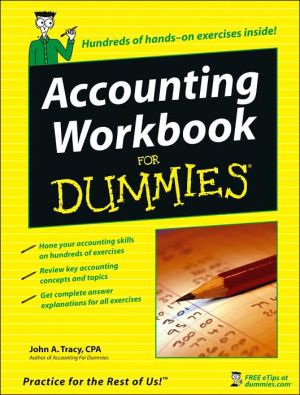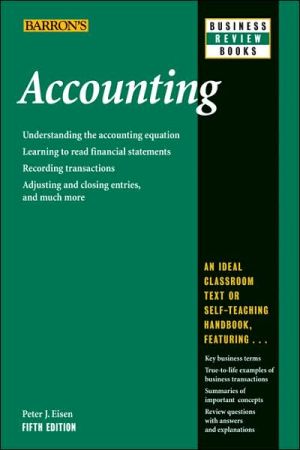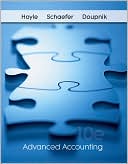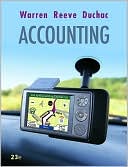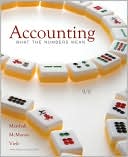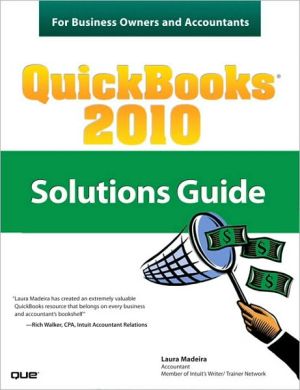Financial Accounting: An Introduction to Concepts, Methods and Uses
Ideal for graduate, MBA, and higher-level undergraduate programs, FINANCIAL ACCOUNTING: AN INTRODUCTION TO CONCEPTS, METHODS, AND USES presents both the basic concepts underlying financial statements and the terminology and methods that allows the reader to interpret, analyze, and evaluate actual corporate financial statements. Fully integrated with the latest International Financial Reporting Standards, inclusion of the latest developments on Fair Value Accounting, and coverage of the...
Search in google:
Ideal for graduate, MBA, and higher-level undergraduate programs, FINANCIAL ACCOUNTING: AN INTRODUCTION TO CONCEPTS, METHODS, AND USES presents both the basic concepts underlying financial statements and the terminology and methods that allows the reader to interpret, analyze, and evaluate actual corporate financial statements. Fully integrated with the latest International Financial Reporting Standards, inclusion of the latest developments on Fair Value Accounting, and coverage of the Codification of US GAAP, this text provides the highest return on your financial accounting course investment
Part I: OVERVIEW OF FINANCIAL STATEMENTS. 1. Introduction to Business Activities and Overview of Financial Statements and the Reporting Process. 2. The Basics of Bookkeeping and Financial Statement Preparation. Part II: ACCOUNTING CONCEPTS AND METHODS. 3. Balance Sheet: Presenting and Analyzing Resources and Financing. 4. Income Statement: Reporting the Results of Operating Activities. 5. Statement of Cash Flows: Reporting the Effects of Operating, Investing, and Financing Activities on Cash Flows. 6. Introduction to Financial Statement Analysis. Part III: MEASURING AND REPORTING ASSETS AND EQUITIES USING GENERALLY ACCEPTED ACCOUNTING PRINCIPLES. 7. Revenue Recognition, Receivables, and Advances from Customers. 8. Working Capital. 9. Long-Lived Tangible and Intangible Assets. 10. Notes, Bonds, and Leases. 11. Liabilities: Off-Balance-Sheet Financing, Retirement Benefits, and Income Taxes. 12. Marketable Securities and Derivatives. 13. Intercorporate Investments in Common Stock. 14. Shareholders' Equity: Capital Contributions, Distributions, and Earnings. Part IV: SYNTHESIS. 15. Statement of Cash Flows: Another Look. 16. Synthesis of Financial Reporting. Appendix: Time Value of Cash Flows. Glossary. Index.
\ From the Publisher"I very much like the [transaction] format and I think students find it intuitive. It does a nice job of highlighting the preservation of the balance sheet identity as transactions are recorded."\ "I like the book's emphasis on the accounting process and the use of journal entries / T-accounts for representing transactions. It is for precisely this emphasis that we continue to prescribe this textbook."\ "Generally I like this text very much. It is easy to read (never complaints from my students) and it is at a slightly more advanced level than most other introductory texts, making it perfect for an MBA program that wishes to teach or have the option to touch on one or more of these more advanced topics."\ \ \

